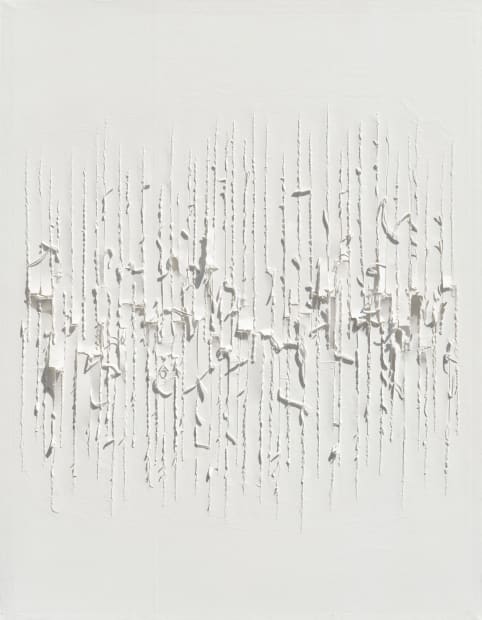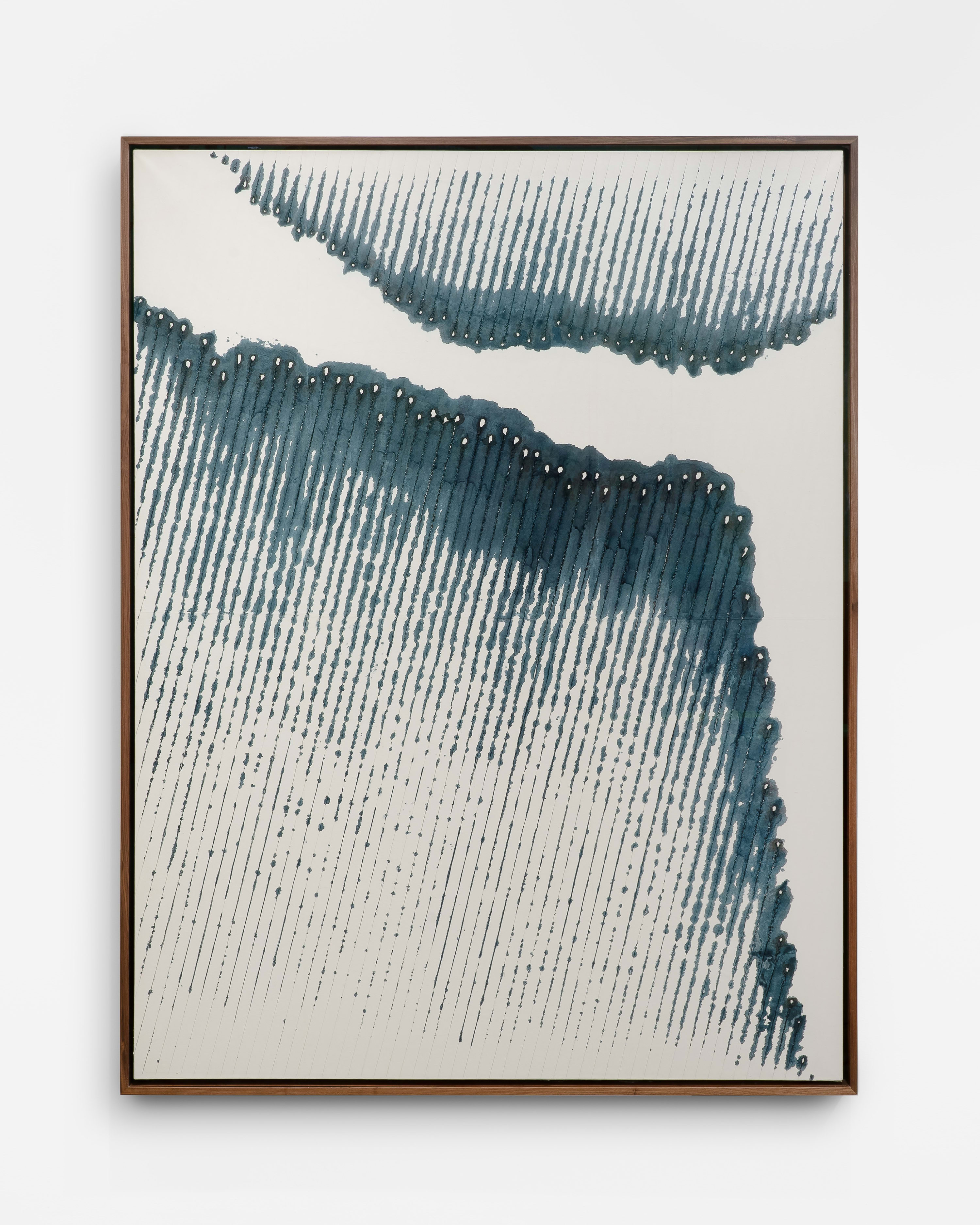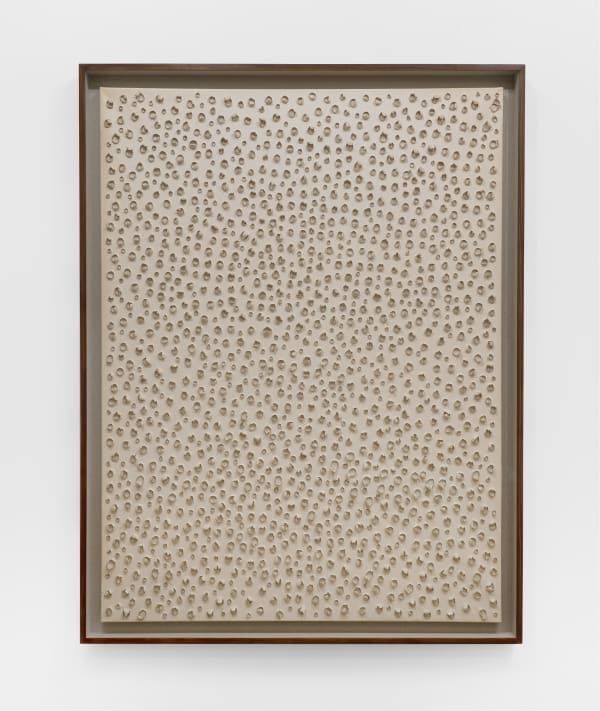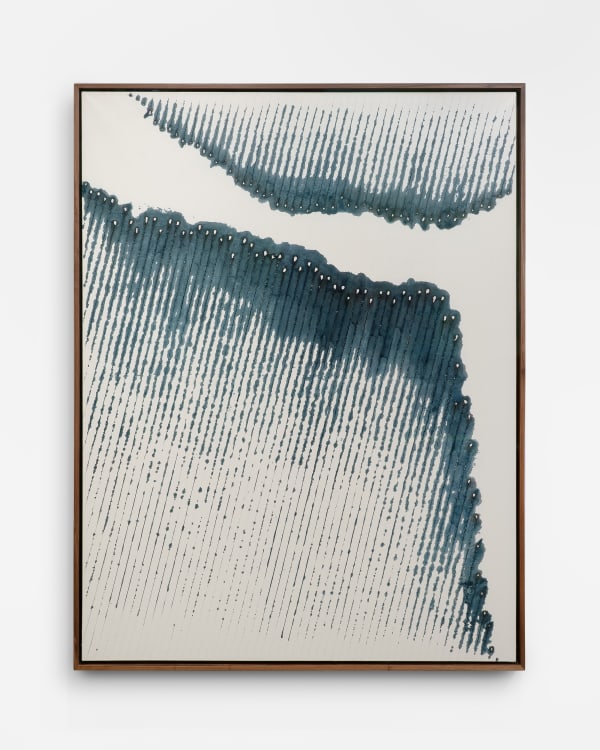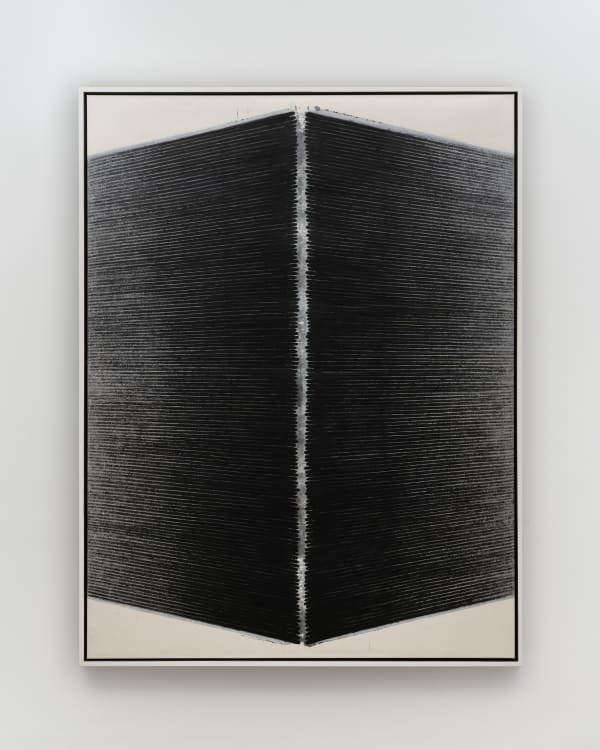-

Kwon Young-Woo, Untitled, 1982. Korean paper, 121 x 94 cm. Image courtesy of Kukje Gallery. Photograph by: Chunho An.
-
"The range of processes from ripping to creating penetrating holes...is not different from drawing lines and dots with a brush. Both contain the performance of the artist's volition."
- Kwon Young Woo
-
One of the few Dansaekhwa artists trained in Oriental ink painting, Kwon instantiated a new relationship between paper and the means by which it was manipulated that touched both the practices of ink painting and hanji in the East and postwar abstraction in the West. Employing traditional material approaches in service of a modernist vision, the artist rejected medium specificity in favor of highlighting the sculptural and architectural possibilities of paper. From his earliest work onward, Kwon saw paper as both surface and structure. He fluctuated between techniques of collage and décollage, often within the same work: layering, pressing, and sculpting it and at other times, ripping, puncturing, and saturating it. Oftentimes using his fingernails to manually scratch and tear the surface of paper from behind, his visceral treatment of paper became a driving force of his practice.
-
-

Kwon Young-Woo (1926 - 2013)
Untitled, 1985
Gouache, Chinese ink on Korean paper
88.19 x 66.93 inches
224 x 170 cm
-
Though his early work centered the complex minutiae of white tones present in hanji, Kwon’s experimentation with the paper as material and method evolved in the late 1970s once he began using monochrome tonal ink and shadows to create optical effects. Creating hair-thin incisions that often dredged into coarse tears in the paper, he would apply ink to the back, allowing it to bleed down and absorb around and through the lacerations. After his return to Korea in 1989, Kwon began to fixate on color and tone rather than structural manipulation. The artist introduced thick lines of blue, brown, and yellow pigments into his works that were made by mixing Western gouache with meok (Chinese ink). This process was a continuation of Kwon’s life-long investigation of chance creations and the collapse of hemispheric divisions. In the 2000s, Kwon incorporated geometric shapes by overlapping thin layers of almost translucent hanji on wooden panels, revealing the complexity of the white paper.
-

-
Featured Works
-

![]() 525 West 21st Street, New York, NY 10011 T 1‑212‑716‑1100 info@tinakimgallery.com
525 West 21st Street, New York, NY 10011 T 1‑212‑716‑1100 info@tinakimgallery.com
Facebook, opens in a new tab.
Instagram, opens in a new tab.
Youtube, opens in a new tab.
Artsy, opens in a new tab.
Ocula, opens in a new tab.
Copyright © 2025 Tina Kim Gallery
This website uses cookies
This site uses cookies to help make it more useful to you. Please contact us to find out more about our Cookie Policy.
Join our mailing list
* denotes required fields
We will process the personal data you have supplied in accordance with our privacy policy (available on request). You can unsubscribe or change your preferences at any time by clicking the link in our emails.

